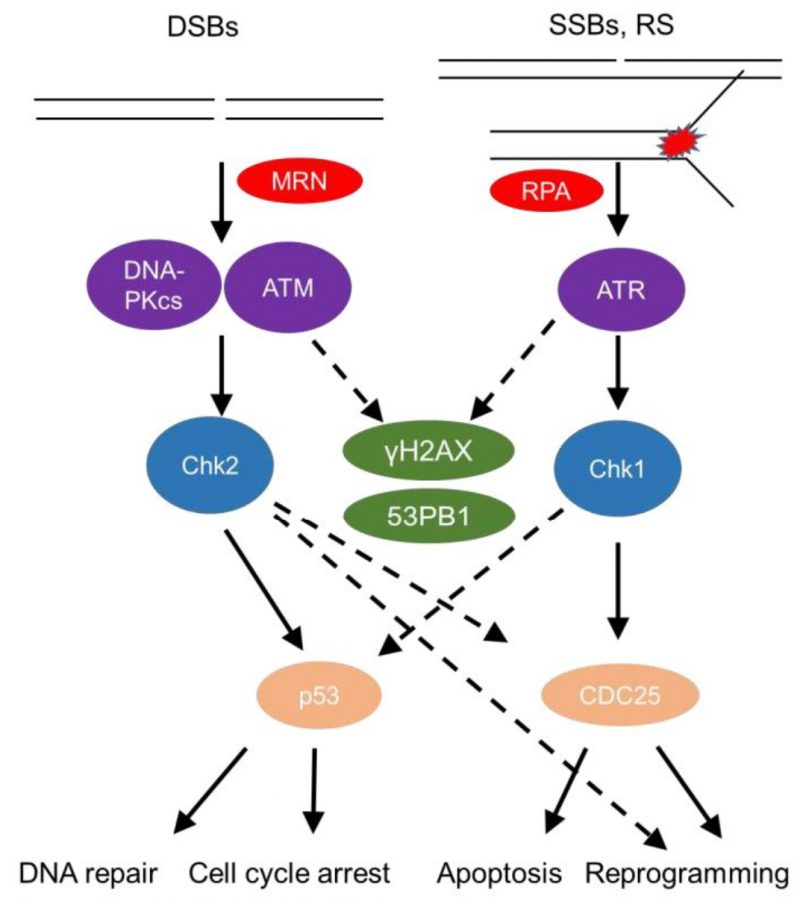Back to article: Genotoxic stress signalling as a driver of macrophage diversity
FIGURE 1: The DNA Damage Response. There are two major arms to the DDR, one designed to deal with double strand breaks (DSBs), which are sensed by the MRN (Mre11, Rad50 and Nbs1) complex, alerting the DNA-PKcs (DNA-dependent protein kinase, catalytic subunit) and ATM (ataxia-telangiectasia mutated) kinases, which further phosphorylate Chk2 (checkpoint kinase 2), and the other one sensing single strand breaks (SSBs) and replication stress through RPA (Replication protein A), activating the ATR (Ataxia telangiectasia and Rad3 related)-Chk1 (checkpoint kinase 1) axis and both arms phosphorylating γH2AX (phosphorylated H2A histone family member X) and 53BP1 (p53-binding protein 1). Major regulators of cell fate such as p53 and cell cycle regulators (for instance cell division cycle 25 phosphatase (CDC25)) get activated and these events, based on the severity of the damage lead to either DNA repair, cell cycle arrest to allow the cell to repair this damage. If damage is substantial and beyond repair, the cell will either go into senescence (permanent cell cycle arrest) or apoptosis (cell death). Alternatively, these pathways can activate non-canonical programs that drive the cell into re-programming and differentiation.

